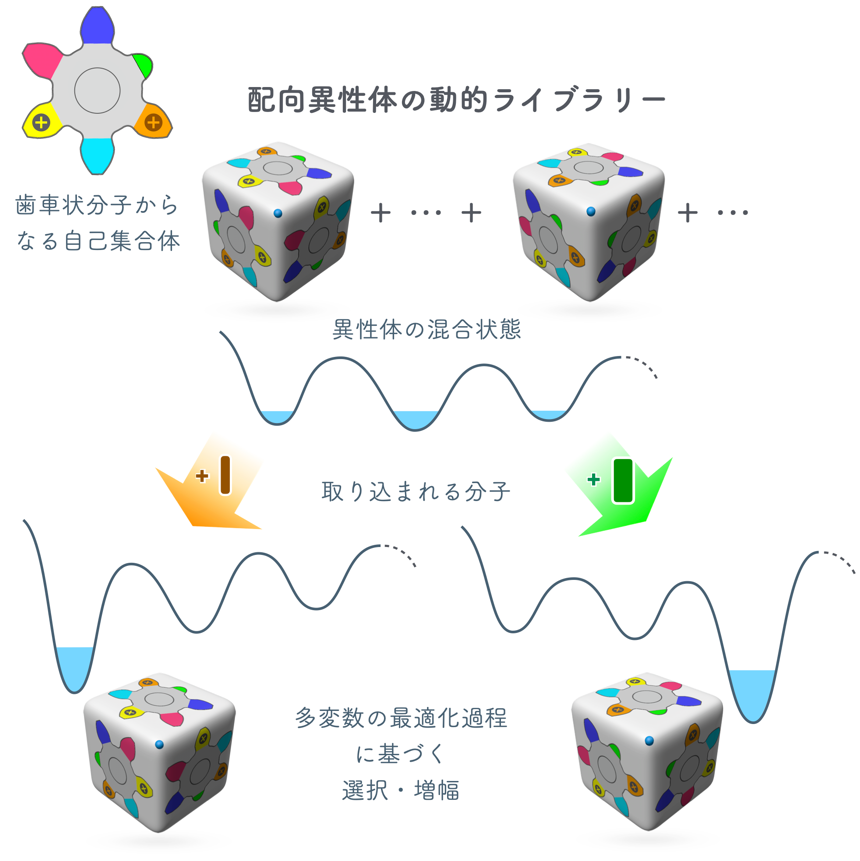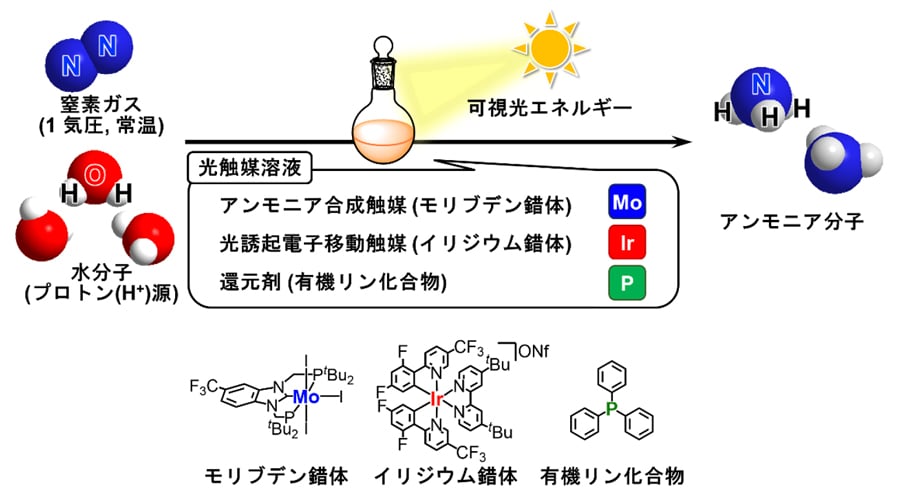2025-05-22 東京大学

多変数の最適化過程による特定の種の選択・増幅
<関連情報>
- https://www.c.u-tokyo.ac.jp/info/news/topics/20250522180000.html
- https://www.nature.com/articles/s41467-025-59181-8
多変量最適化プロセスによる動的ライブラリーからの自己組織化異性体の選択 Selection of self-assembled configurational isomers from a dynamic library via a multivariant optimization process
Hongye Chen,Tsukasa Abe,Runyu Chai & Shuichi Hiraoka
Nature Communications Published:22 May 2025
DOI:https://doi.org/10.1038/s41467-025-59181-8
Abstract
Selection of a suitable species from a dynamic library in response to external stimuli is a key event in evolution, adaptation, and switching. The desymmetrization of building blocks enables the generation of configurational isomers for self-assembly, which is a rational approach to creating a complicated dynamic library without increasing the variety of components. However, because of their structural similarity, the selection of isomers from such a dynamic library is challenging. Here we show an artificial molecular system in which two types of self-assemblies are separately selected from a dynamic library consisting of 16 configurational isomers of hexameric cube-shaped entities assembled from CS-symmetric gear-shaped amphiphiles upon binding two or three guest molecules. The two types of isomers were selected not only by the induced-fit selection caused by the guest molecules but also by the induction of the spatial arrangements of the guest molecules in the cluster by the assemblies. These results indicate that mutual multivariant optimization is a hidden strategy to create order from chaos in complicated systems.



